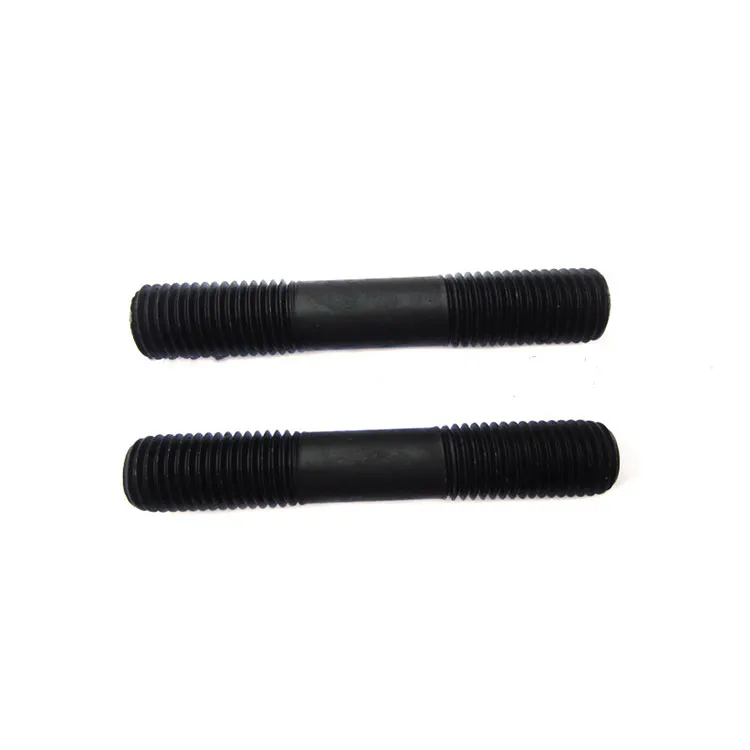Understanding Full Threaded Rods: Your Ultimate Guide
2024-11-04
Full threaded rods are essential components in construction and manufacturing, providing strong, reliable connections in various applications. Whether you’re a DIY enthusiast or a professional contractor, understanding full threaded rods can help you choose the right materials for your projects. In this blog, we’ll answer some common questions about full threaded rods, their uses, and their benefits.
What is a full threaded rod?
A full threaded rod is a long, cylindrical metal rod that has threads running the entire length of its surface. These rods are typically made from materials like stainless steel, carbon steel, or alloy steel, and are used to fasten or connect different components in construction, machinery, and various other applications.
How does a full threaded rod differ from a regular threaded rod?
The primary difference between a full threaded rod and a regular threaded rod lies in the threading. A full threaded rod has threads that extend from one end to the other, providing a continuous gripping surface. In contrast, a regular threaded rod may have a portion of its length without threads, which can limit its versatility in certain applications where complete thread engagement is needed.
What are the common applications of full threaded rods?
Full threaded rods are used in a variety of applications, including:
1. Construction: They are often employed as anchors or tie rods to connect structural elements, such as beams and columns, ensuring stability in buildings and bridges.
2. Manufacturing: In industrial settings, full threaded rods are used to assemble machinery and equipment, providing strong connections that can withstand heavy loads.
3. Automotive: These rods can be found in various automotive components, where they serve as bolts and fasteners in assembly.
4. Furniture: Full threaded rods are used in furniture construction to create sturdy joints, allowing for easy assembly and disassembly.
5. Electrical: They are also used in electrical applications for securing components, such as lighting fixtures and conduits.
What are the benefits of using full threaded rods?
The advantages of using full threaded rods include:
1. Versatility: Their continuous threads allow for various fastening techniques, making them suitable for numerous applications across different industries.
2. Strength: Full threaded rods provide a strong and reliable connection, ensuring that components remain securely fastened under tension or load.
3. Ease of Use: They can be easily cut to the desired length, allowing for customization based on specific project requirements.
4. Cost-Effective: Full threaded rods are typically less expensive than other types of fasteners, making them a budget-friendly option for construction and manufacturing.
How do you choose the right full threaded rod for your project?
When selecting a full threaded rod, consider the following factors:
1. Material: Choose a material that suits your project’s requirements. For outdoor applications or environments with moisture, stainless steel may be the best option due to its corrosion resistance. For general indoor use, carbon steel may be sufficient.
2. Diameter: The diameter of the rod should match the load requirements of your application. Larger diameters can handle heavier loads, while smaller diameters are suitable for lighter applications.
3. Length: Determine the length needed for your project and consider any adjustments that may be required during installation.
4. Thread Pitch: The thread pitch, or the distance between threads, can impact the strength and grip of the connection. Fine threads offer better tension control, while coarse threads provide a stronger hold in softer materials.
How do you install a full threaded rod?
Installing a full threaded rod typically involves the following steps:
1. Preparation: Ensure that the surfaces you are connecting are clean and free from debris.
2. Cutting: If necessary, cut the threaded rod to the desired length using a hacksaw or suitable cutting tool.
3. Drilling: Drill holes into the materials you are joining. The hole diameter should match the diameter of the rod to ensure a snug fit.
4. Inserting the Rod: Insert the full threaded rod through the drilled holes. If using nuts and washers, place them on either side of the joint for added support.
5. Securing: Tighten the nuts using a wrench or socket, ensuring the connection is secure but not overly tightened to avoid damaging the materials.
Are there any safety considerations when using full threaded rods?
Yes, safety is essential when working with full threaded rods. Here are some tips:
1. Use Personal Protective Equipment (PPE): Wear safety goggles, gloves, and appropriate footwear to protect yourself during installation.
2. Ensure Proper Load Capacity: Make sure the full threaded rod is rated for the load it will bear. Overloading can lead to failure.
3. Check for Corrosion: Inspect rods for signs of corrosion or damage, especially in outdoor or humid environments, to prevent structural failure.
4. Follow Manufacturer Guidelines: Adhere to any specifications and recommendations provided by the manufacturer to ensure safe and effective use.
Conclusion:
Full threaded rods are versatile, strong, and cost-effective fasteners suitable for a wide range of applications in construction, manufacturing, and more. By understanding their features, benefits, and proper installation techniques, you can make informed decisions when selecting the right full threaded rod for your projects. Whether you’re building a new structure or assembling machinery, incorporating full threaded rods can enhance the durability and reliability of your work.



